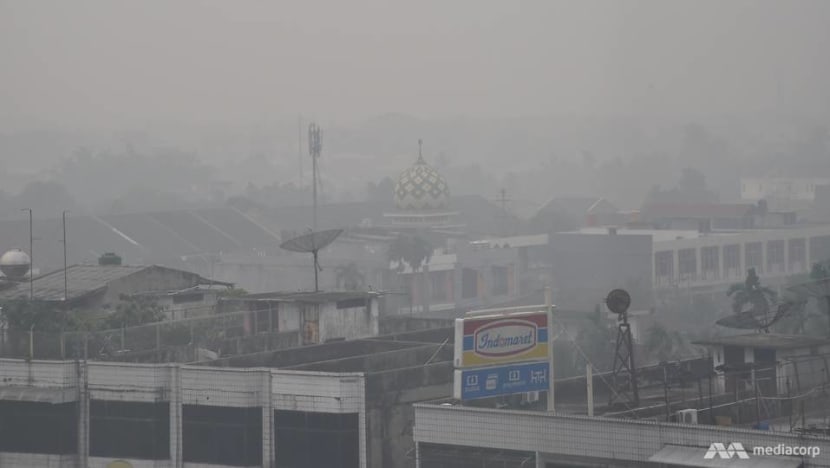Indonesia preparing 'very well' for haze amid possible return of El Nino, says minister

Haze blanketing the city of Pekanbaru, Riau in Indonesia, on Sep 18, 2019. (Photo: Nivell Rayda)
SINGAPORE: Indonesia is preparing “very well” for the possibility of transboundary haze this year, said Indonesia’s coordinating minister for maritime and investment affairs Luhut Binsar Pandjaitan on Tuesday (Jun 6).
“We have climate modification technology. This is (so) we can make early rain in order to prepare a pond, so we have enough water to stop a fire,” Mr Luhut told reporters at the sidelines of the Ecosperity Week 2023 conference held at Singapore’s Marina Bay Sands.
When asked about the haze issue, he said: “Haze is not really an issue anymore, I believe.”
Haze in the Southeast Asian region due to forest fires in Indonesia has been a perennial problem over the past decades. In 2013, large-scale burning in many parts of Sumatra and Borneo led to a haze crisis that affected several countries, including Singapore, Malaysia, Brunei and Thailand.
The three-hour pollutant standards index (PSI) in Singapore hit a record 401 in June of that year, leading to a rush to stock up on N95 masks. The haze situation in Malaysia reached its worst since 2005.
In September 2015, which was also an El Nino year, the 24-hour PSI crossed the hazardous mark in Singapore.
Last week, the Meteorological Service Singapore forecasted El Nino conditions as well as a positive Indian Ocean Dipole to develop in the second half of the year. This would increase the risk of transboundary haze affecting Singapore and the region due to warmer and drier conditions, it added.
The ASEAN Specialised Meteorological Centre also recently flagged a higher risk of haze in the southern ASEAN region between June and October this year.
During the last strong El Nino event in 2015/2016, Singapore’s total rainfall from June to September 2015 was about 35 per cent below the long-term average.
On Tuesday, Mr Luhut said that his country would “like also to see the quality of air (in the capital city of Jakarta to be) like in Singapore”. Jakarta is frequently blanketed in smog and consistently ranks as one of the most polluted cities in the world.
Mr Luhut added that his country is targeting net zero carbon emissions by 2055 “or maybe even earlier than that”.
“Maybe we can go to 2055 because our first target is the 2070s, and then we will try with the technology, with the international support, we can go to to the year 2060. But again, if we move like this, very steady like this, we can maybe do it earlier than 2060. Why not?”
As for what is needed to reach this goal, Mr Luhut said collaboration was important and not to underestimate the spirit of Indonesian people.
He also reiterated the Indonesian government’s goal of getting 10 per cent of the population to use electric vehicles by next year. In March, it announced incentives to entice 200,000 people to switch to electric motorcycles as part of the EV push, as reported by Bloomberg.
In terms of reducing coal emissions, Mr Luhut noted that Indonesia requires investments to do that.
He made reference to the US$20 billion Just Energy Transition Partnership (JETP) deal that Indonesia recently signed with international partners such as the United States during the Group of 20 meeting in Bali last November.
The programme aims to help Indonesia move away from fossil fuels and for renewable energy to comprise more than one-third of its power generation by 2030.
“Government in Indonesia already set up the programme for this. We identified the problem and we also listed down which coal fire that we can make early retirement,” Mr Luhut said.
“We just need collaboration, global countries to finance this project in order to shut down coal fires. We have a lot of potential green energy … again, we need also the investment to invest in this area, so we can reduce coal fire.”
In March, Indonesia and Singapore signed a memorandum of understanding on renewable energy cooperation, allowing Singapore to potentially tap renewable energy such as solar power and green hydrogen from Indonesia.
Read this story in Bahasa Indonesia here.

















